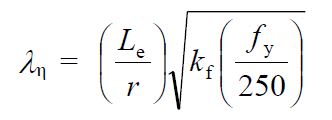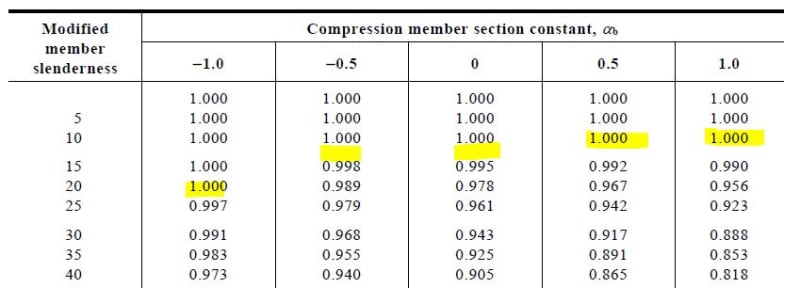Does anyone have any information on when (what KL/r) you could realistically expect a short column to yield in compression instead of buckle. In the AISC 360-16 code as KL/r goes to zero, Fe will go to infinity, and the Fcr term will go to Fy. Obviously you could solve for the Euler buckling length that would result in a critical buckling stress of Fy, but if you plugged that length into the AISC code then you would get <Fy (you will only get Fcr = Fy when KL/r goes to zero). I am assuming also the column's elements are compact so no local buckling will occur. Any information is appreciated. Thanks
Navigation
Install the app
How to install the app on iOS
Follow along with the video below to see how to install our site as a web app on your home screen.
Note: This feature may not be available in some browsers.
More options
Style variation
-
Congratulations cowski on being selected by the Eng-Tips community for having the most helpful posts in the forums last week. Way to Go!
You are using an out of date browser. It may not display this or other websites correctly.
You should upgrade or use an alternative browser.
You should upgrade or use an alternative browser.
Short Columns yielding in compression
- Thread starter E720
- Start date
- Status
- Not open for further replies.
In the Australian codes, the modified slenderness factor (below) has to be less than about 15-25 for there to be no reduction in capacity due to slenderness/buckling. This also includes the material strength.

The exact ratio depends on another factor alpha_b, which accounts for things like residual stresses from welding or hot rolling, and possibly geometric tolerances.


The exact ratio depends on another factor alpha_b, which accounts for things like residual stresses from welding or hot rolling, and possibly geometric tolerances.

Settingsun
Structural
Agent, the US code doesn't have the horizontal part of the capacity function, hence the question.


GastonLagaffe
Structural
My understanding is that the buckling formulas incorporate an additional factor of safety to account for imperfections / accidental eccentricities. That'd be why you're not getting your full 50 ksi with the formulas. Imperfections wouldn't have much of an effect at short lengths. Eccentricities however definitely would - the column sitting on the baseplate at short length would behave much more like a fixed connection than a pinned connection.
That said, there's some judgement involved here. I don't think anyone would blame you for taking the squash load if you have a stubby column (eg wider than its height). Short like that and you might start seeing pretty significant stress triaxiality in your column which would increase your effective yield strength.
That said, there's some judgement involved here. I don't think anyone would blame you for taking the squash load if you have a stubby column (eg wider than its height). Short like that and you might start seeing pretty significant stress triaxiality in your column which would increase your effective yield strength.
- Thread starter
- #7
thereitcomestoday
Structural
Thsi might be helpful: Sakino, K., Nakahara, H., Morino, S. and Nishiyama, I. (2004), “Behavior of Centrally Loaded Concrete-Filled Steel-Tube Short Columns,” Journal of Structural Engineering, ASCE, Vol. 130, No. 2, pp. 180–188.
- Status
- Not open for further replies.
Similar threads
- Question
- Replies
- 2
- Views
- 6K
- Locked
- Question
- Replies
- 5
- Views
- 645
- Locked
- Question
- Replies
- 5
- Views
- 3K
- Replies
- 9
- Views
- 3K
- Question
- Replies
- 1
- Views
- 5K

